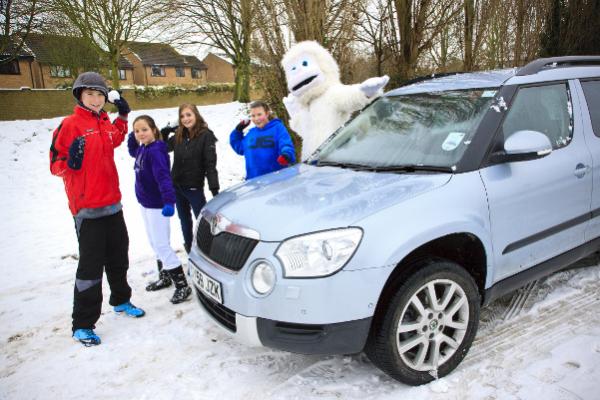search
date/time
 | Yorkshire Times A Voice of the Free Press |

Andy Harris
Motoring and Property Editor
@ytimesmotoring
2:00 PM 26th February 2020
cars
Winter Driving Tips - Stay Safe

Winter Tyres

Winter tyres have much to commend them and have great benefits when temperatures drop below 7 degrees C. Indeed in many European countries more used to colder temperatures, it is compulsory to fit them. The tyre has a much higher silica content which makes them more pliable at lower temperatures, thus giving you greater grip. Braking distances can also be improved by up to 10%. Winter tyres need to be fitted to all four wheels, not just those providing the propulsion.
In order to simplify the process, many people try to buy a second-hand set of wheels on which to fit the winter tyres. Some tyre retailers and car dealerships will offer to carry out the twice yearly swap around free of charge. Some will also offer a storage facility for the tyres that are off the car until next needed. It is worth asking, especially if storage space at home is at a premium.
Visit www.tyresafe.org for more details.
Snow Chains/Socks
If the expense of winter tyres is too great, it may be as well to consider a set of snow chains or some snow socks. The chains wrap around tyres to give grip on snow and ice and are very effective. The disadvantage is that they can be difficult to fit in the cold and must be removed as soon as you leave the ice and snow behind. £100 - £150 should buy a decent set and it is a good idea to practice fitting them at home.
The cheapest solution to keeping moving is the snow sock. This has a textile outer cover that goes over the tyres on the driven wheels and is designed to get you short distances over untreated roads. Ideal if a steep hill stands between you and home. Like the snow chains, they cannot be used on tarmac. Prices start at around £50.
General Safety Checks

Battery - winter driving and cold starting put a great strain on the car battery. It is worth checking its age and replacing if it is over 5 years old. Ask your garage to test the battery if in any doubt. Remember to turn off unnecessary electrical equipment (heated rear windows use a lot of power
A set of jump leads in the boot may be useful, though great care should be taken in their use to avoid damaging the car's electrical system.
Wiper Blades - rubber perishes and a new set of blades once a year is money well spent.
Also by Andy Harris...
Mazda’s New Flagship CX-80 Model UnveiledLatest Version Of Morgan’s Plus Four RevealedBYD Seal – UK Launch ReviewMINI Countryman – UK Launch ReviewGenesis, The Korean Luxury Automotive Brand, Opens In LeedsLighting - it goes without saying that a regular check should be made on the car's lighting system. Bulb replacement is not as easy as it used to be on many cars, but most garages will fit them for free if required.
Servicing - if your car hasn't been serviced for a while, winter is a good time to get this work carried out. You should receive a safety report which will highlight the need for tyre or brake pad replacement. Tyres nearing the end of their life, whilst still legal, (1.6mm across the central 3/4 of the tread around the complete circumference of the tyre) will not offer much grip or stopping power.
Mobile Phone - make sure your phone is fully charged and carry a charger in the car.
Supplies - keep some bottled water and snack bars in the car. A blanket, warm clothes and a shovel are a good idea. A small bag of grit could also be included in the winter survival kit.
Driving
The following tips should help you complete your journey safely in adverse weather conditions:
be seen!
Drive in a lower gear than normal. You will need to brake less on snow and ice and this will help avoid locking your wheels.
Avoid harsh braking and acceleration on slippery surfaces and reduce speed smoothly.
Increase the gap between you and the car in front. Snowy and icy conditions can increase braking distances by up to ten times.
Listen to travel news before and during the car journey and avoid travelling on heavily congested routes.
Plan your route to avoid untreated roads, even if this means a longer round trip.
Keep an eye on the outside temperature gauge for freezing conditions.
Look for areas of road where the low winter sun never reaches. It is these areas where black ice may form.
If your car starts to lose traction or skid, avoid braking as this will most likely make matters worse. Gently steer the car in the direction you want to travel and try to let the car come to a halt by itself or with gentle use of the gears.
Buy a 4 x 4

For the rural motorist who needs to stay mobile, purchasing a four-wheel-drive car may be sensible. Not all are huge and thirsty monsters!
We would recommend the following if purchasing new:
Fiat Panda Twinair 85 4x4 - priced at £14,575.
Skoda Yeti 2.0 TDi Outdoor 4WD - prices start at £19,895.
Suzuki Vitara Allgrip - prices start at £19,799.
Dacia Duster 4WD - £11,495 to £15,495.
If purchasing second-hand, we would recommend:
Toyota RAV4 - has been on sale since the 1990s and therefore plenty of choice. Permanent four- wheel-drive and legendary Toyota reliability.
Honda CR-V - another reliable Japanese car. Runs in front-wheel-drive and automatically engages the rears when the fronts start to slip.
Subaru Forester/Legacy/Outback - Subaru have been making four-wheel-drive vehicles for decades and they do it very well. More car like to drive (and all the better for it) newer models are available finally with diesel engines.
Fiat Panda 4x4 - always far more capable than it looks, aided by its light weight. Cheap to run, though perhaps not as reliable as the Japanese rivals.
Land Rover Defender - an old Land Rover always has an appeal. Far more utilitarian and agricultural to drive, but will go anywhere. Vast numbers to chose from, but do take a long drive and some expert advice before taking the plunge.
Audi Quattro models - Audi have been producing four-wheel-drive versions of most of their range for a long time and there are plenty of second-hand models for sale. An Audi A4 Avant Estate model with 4x4 would be ideal as family winter transport.